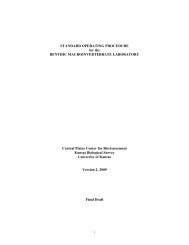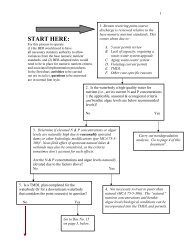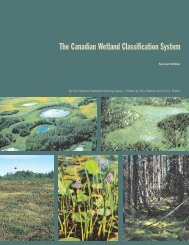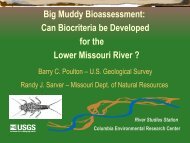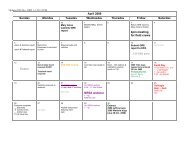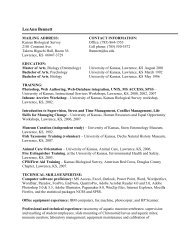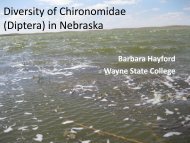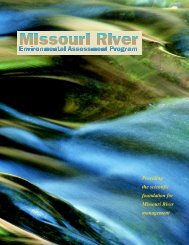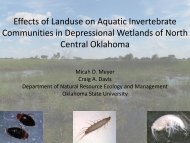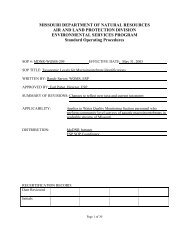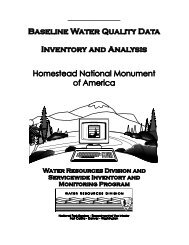Koontz, J., D.G. Huggins, C.C. Freeman, D.S. Baker - Central Plains ...
Koontz, J., D.G. Huggins, C.C. Freeman, D.S. Baker - Central Plains ...
Koontz, J., D.G. Huggins, C.C. Freeman, D.S. Baker - Central Plains ...
You also want an ePaper? Increase the reach of your titles
YUMPU automatically turns print PDFs into web optimized ePapers that Google loves.
Appendix D. Disturbance assessment scoring form.<br />
CPCB WETLAND DISTURBANCE ASSESSMENT R7W08712 - _______<br />
I. Wetland Attributes. Score to a maximum of 15 points.<br />
1. Wetland Size. Wetland boundaries for delineation are defined by evidence of changes in hydrology and may be fairly wide,<br />
especially in areas where there is gradual relief.<br />
1 pts 50 acres<br />
2. Natural Buffer Width. Natural wetland buffer includes woodland, prairie, surrounding wetlands and water bodies. The buffer<br />
width should be estimated by taking the average of buffer widths in each cardinal direction from the center of the wetland.<br />
1 pts 50m<br />
3. Land Use. Surrounding land-use is defined as dominant visible land-use adjacent to and upland from the wetland area, including<br />
the natural buffer.<br />
1 pts Intensive urban, industrial or agricultural activities<br />
2 pts Recovering land, formerly cropped or a mix of intensive and natural uses<br />
3 pts Landscape is relatively undisturbed by human activities<br />
4. Hydrology. Determine the dominant water source based on direct observation of the wetland and its position in the landscape<br />
relative to other water bodies or hydrologic features.<br />
1 pts Precipitation fed wetland, no recognizable inflowing water<br />
2 pts Fed by seasonal surface water, stormwater drainage and/or groundwater<br />
3 pts Source is clearly an adjacent lake or an unobstructed inflowing stream<br />
5. Vegetation Coverage. Refers to aerial coverage of wetland flora or the proportion of vegetated area to open water. Open water<br />
area does not include adjacent lakes.<br />
1 pts 70% 3 pts 40-70%<br />
Wetland Attributes Total<br />
II. Reference Indicators. Score one point for each (to be added).<br />
Wetland located in a National Wildlife Refuge, Conservation Area or otherwise protected by local, state or federal laws<br />
Amphibian breeding habitat quality is pristine<br />
Waterfowl habitat quality is pristine<br />
Endangered/Threatened Species present<br />
Interspersion as macrohabitat diversity characterized by a high shore to surface area ratio<br />
Connected to water bodies (and wetlands) during high-water, located within a natural complex and/or part of a riparian corridor.<br />
Reference Indicators Total<br />
III. Disturbance. Score one point for each (to be subtracted).<br />
Sedimentation suggested by sediment deposits/plumes, eroding banks/slopes, and/or turbid water column<br />
Upland soil disturbance such as tilled earth or construction activities<br />
Cattle present within or on lands adjacent to the wetland<br />
Excessive algae present in large, thick mats<br />
>25% invasive plant species<br />
Steep shore relief (score 2 pts if more than 50% of wetland edge)<br />
Altered hydrology shows deviation from historical regime and does not attempt to preserve/restore it<br />
Wetland is managed as a fishery or hunting club (i.e. water level is manipulated to limit growth of emergents)<br />
84 of 84<br />
Disturbance Total –<br />
Total Score (Wetland Attributes + Reference Indicators – Disturbance) =



